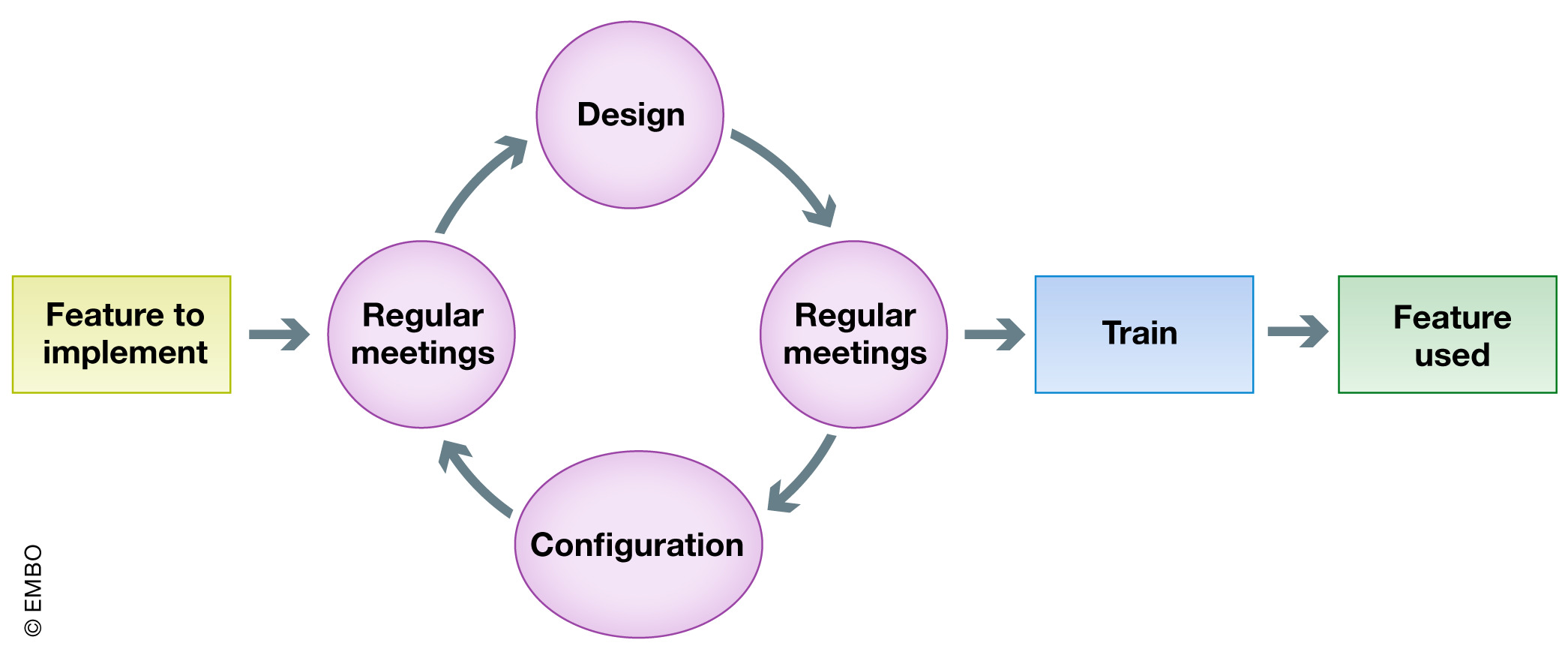Difference between revisions of "Template:Article of the week"
Shawndouglas (talk | contribs) (Updated for the week) |
Shawndouglas (talk | contribs) (Updated article of the week text) |
||
| Line 1: | Line 1: | ||
<div style="float: left; margin: 0.5em 0.9em 0.4em 0em;">[[File: | <div style="float: left; margin: 0.5em 0.9em 0.4em 0em;">[[File:Fig6 Argento EMBOReports2020 21-3.jpg|240px]]</div> | ||
'''"[[Journal: | '''"[[Journal:Institutional ELN-LIMS deployment: Highly customizable ELN-LIMS platform as a cornerstone of digital transformation for life sciences research institutes|Institutional ELN-LIMS deployment: Highly customizable ELN-LIMS platform as a cornerstone of digital transformation for life sciences research institutes]]"''' | ||
The systematic recording and management of experimental data in academic life science research remains an open problem. École Polytechnique Fédérale de Lausanne (EPFL) engaged in a program of deploying both an [[electronic laboratory notebook]] (ELN) and a [[laboratory information management system]] (LIMS) six years ago, encountering a host of fundamental questions at the institutional level and within each [[laboratory]]. Here, based on our experience, we aim to share with research institute managers, principal investigators (PIs), and any scientists involved in a combined ELN-LIMS deployment helpful tips and tools, with a focus on surrounding yourself with the right people and the right software at the right time. In this article we describe the resources used, the challenges encountered, key success factors, and the results obtained at each phase of our project. Finally, we discuss the current and next challenges we face, as well as how our experience leads us to support the creation of a new position in the research group: the laboratory data manager. ('''[[Journal:Institutional ELN-LIMS deployment: Highly customizable ELN-LIMS platform as a cornerstone of digital transformation for life sciences research institutes|Full article...]]''')<br /> | |||
<br /> | <br /> | ||
''Recently featured'': | ''Recently featured'': | ||
: ▪ [[Journal:Health care and cybersecurity: Bibliometric analysis of the literature|Health care and cybersecurity: Bibliometric analysis of the literature]] | |||
: ▪ [[Journal:Epidemiological data challenges: Planning for a more robust future through data standards|Epidemiological data challenges: Planning for a more robust future through data standards]] | : ▪ [[Journal:Epidemiological data challenges: Planning for a more robust future through data standards|Epidemiological data challenges: Planning for a more robust future through data standards]] | ||
: ▪ [[Journal:Wrangling environmental exposure data: Guidance for getting the best information from your laboratory measurements|Wrangling environmental exposure data: Guidance for getting the best information from your laboratory measurements]] | : ▪ [[Journal:Wrangling environmental exposure data: Guidance for getting the best information from your laboratory measurements|Wrangling environmental exposure data: Guidance for getting the best information from your laboratory measurements]] | ||
Revision as of 14:15, 5 July 2021
The systematic recording and management of experimental data in academic life science research remains an open problem. École Polytechnique Fédérale de Lausanne (EPFL) engaged in a program of deploying both an electronic laboratory notebook (ELN) and a laboratory information management system (LIMS) six years ago, encountering a host of fundamental questions at the institutional level and within each laboratory. Here, based on our experience, we aim to share with research institute managers, principal investigators (PIs), and any scientists involved in a combined ELN-LIMS deployment helpful tips and tools, with a focus on surrounding yourself with the right people and the right software at the right time. In this article we describe the resources used, the challenges encountered, key success factors, and the results obtained at each phase of our project. Finally, we discuss the current and next challenges we face, as well as how our experience leads us to support the creation of a new position in the research group: the laboratory data manager. (Full article...)
Recently featured:










